This post will show you how to set up Multi-Monitor Gaming on a Windows PC. We also show you what you need to do if Multi-Monitor Gaming is not working. Multi-monitor gaming is an excellent way to enhance your gaming experience. It can give you more space to play games and allow you to keep track of multiple things at once. However, it can sometimes be tricky if you’re new to it.
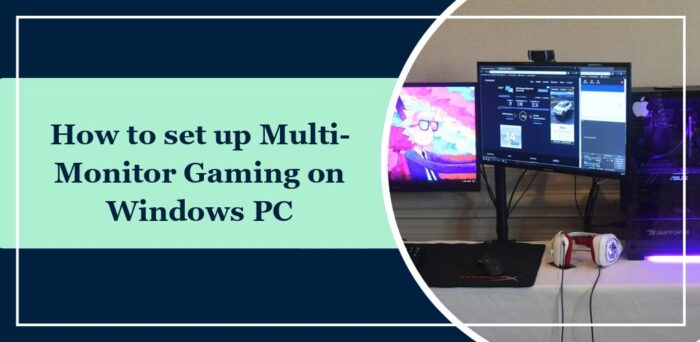
How to set up Multi-Monitor Gaming on a Windows PC?
Follow these steps to set up multi-monitor gaming on a Windows 11/10 PC:
- Setting up multiple monitors via Windows Settings
- Setting Up Multi-Monitor Gaming with Intel Graphics Command Center or Intel Arc Control
- Setting up Multi-Monitor Gaming with NVIDIA Control Panel
- Setting Up Multi-Monitor Gaming with AMD
Let’s now see these in detail.
1] Setting up multiple monitors via Windows Settings
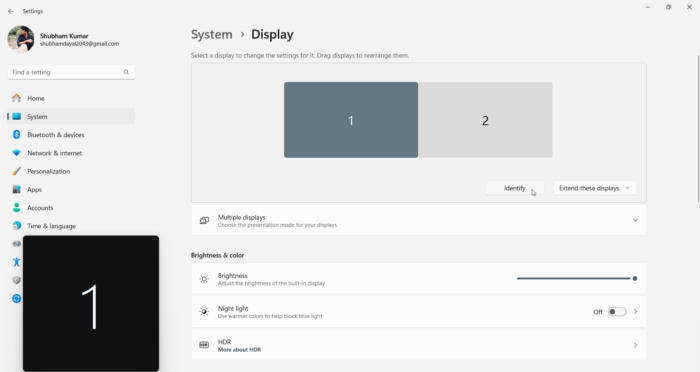
Start by checking if your device and GPU support multiple displays. If its capable, ensure you have all the cables to connect the monitors.
Next, hook up all the cables to the monitors and your PC using HDMI or Display Port. This depends on what ports your PC has.
Once all the cables and monitors are connected, power on your PC and the monitors.
Now, press Windows + I to open Settings and navigate to System > Display.
All your connected displays will be available with a number assigned to them; click on Identify to know what number every display is given.
Also, click on the dropdown beside Identify and select Extend these displays.
2] Setting Up Multi-Monitor Gaming with Intel Graphics Command Center or Intel Arc Control
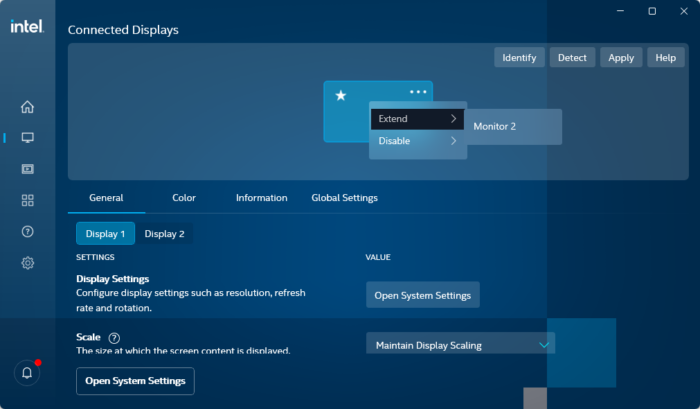
You can also set up multiple monitors on your Windows device using the Intel Graphics Command Center or Intel Arc Control. This can only be done on Intel PCs that offer graphics configuration options and optimizations. Here’s how:
Open Intel Graphics Command Center or Intel Arc Control and navigate to the Display tab.
Here, all your connected displays will be available with a number assigned to them.
Click on the three dots beside the display icon, and select Extend > Monitor X. Here, “X” refers to the monitor number.
Click on Apply to save the changes.
You can also make changes in display color, FPS, scaling, etc., and customize settings as required.
3] Setting up Multi-Monitor Gaming with NVIDIA Control Panel
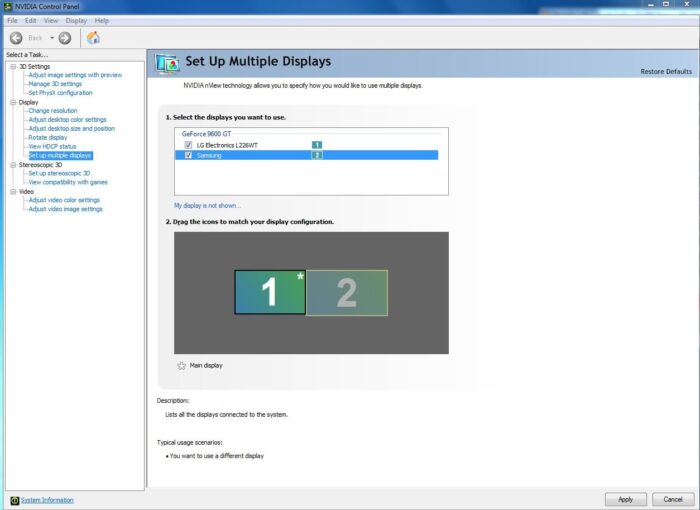
On devices with NVIDIA GPUs, you can set up multi-monitor gaming using the NVIDIA Control Panel. Here’s how:
Launch the NVIDIA Control Panel, expand the Display section in the left pane, and click Set up multiple displays.
Select the displays you want to set up in the right pane.
Scroll down and click on the Surround spanning options, then select the Span displays with Surround option.
This app will also allow you to configure various other display settings as per your gaming requirements.
4] Setting Up Multi-Monitor Gaming with AMD
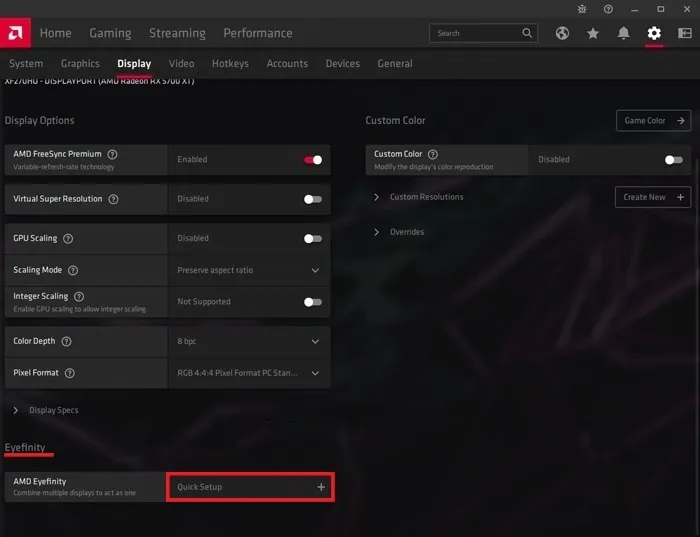
On Windows devices with AMD GPUs, you can set up multi-monitor gaming using the dedicated AMD control application. Here’s how:
Open the AMD application and click the Gear icon at the top right to open Settings.
Navigate to the Display tab, click on AMD Eyefinity at the bottom, choose a configuration, and click Next.
Lastly, click Finish to complete the process.
Multi-Monitor Gaming not working on PC
If you’re experiencing issues with multi-monitor gaming on your Windows PC, follow these suggestions to fix it:
- Check if your GPU Supports Multi-Monitor Gaming
- Configure Display and Game Settings
- Force Windows to Detect the Monitor
- Update Graphics Drivers
- Check Connection and Cables
Now, let’s see these in detail.
1] Check if your GPU Supports Multi-Monitor Gaming
Start by checking if your GPU supports multi-monitor gaming. If your graphics card doesn’t, you may be unable to set up multiple monitors.
2] Configure Display and Game Settings
Next, check if the display and game settings are configured correctly. Here’s how you can configure multiple display settings in Windows:
- Press Windows + I to open Settings and navigate to System > Display.
- Here, click on the dropdown beside Identify and select Extend these displays.
For setting game settings read the game’s manual or online documentation.
3] Force Windows to Detect the Monitor
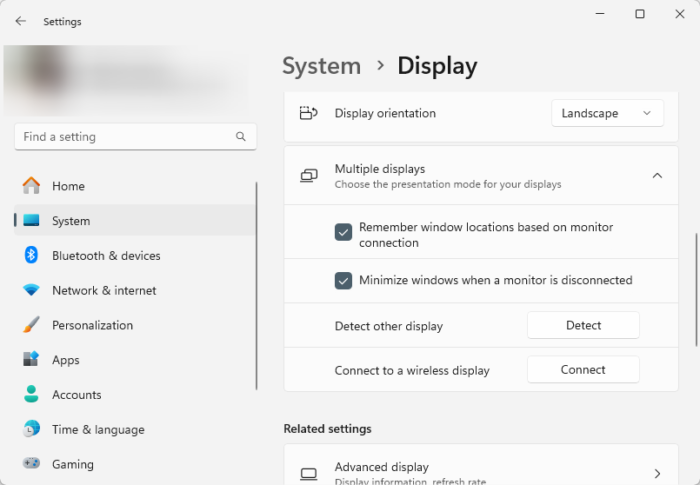
If Windows is not detecting your monitor, you can force it to do so. Here’s how:
- Press Windows + I to open Settings and navigate to System > Display.
- Here, expand the Multiple displays option and click on Detect beside Detect other display.
- Windows will now detect all displays connected to it.
4] Update Graphics Drivers
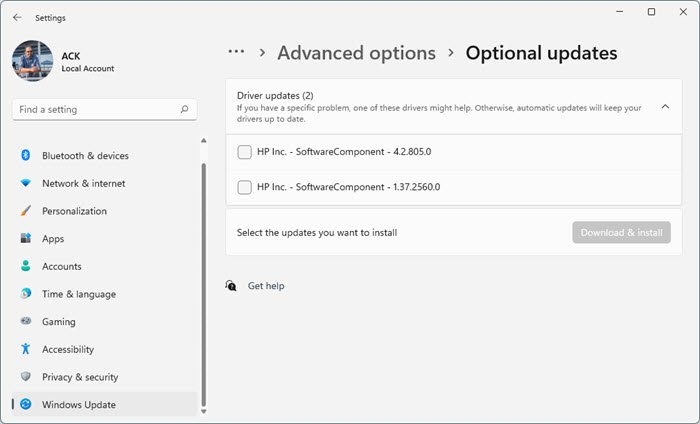
Next, check if the graphics drivers installed on your PC are updated to the latest version. These can get outdated or corrupted, which could be why multi-monitor gaming is not working. Update the graphics drivers and see if the error’s fixed. Here’s how:
- Open Settings and navigate to Update & Security > Windows Update.
- Right under it, look for a clickable link—View optional updates.
- Under Driver Updates, a list of updates will be available, which you can choose to install if you are facing an issue manually.
Alternatively, you can manually download and install drivers on your computer from the manufacturer’s website or use tools like NV Updater, AMD Driver Autodetect, and Intel Driver Update Utility.
5] Check Connection and Cables
Lastly, if none of these suggestions helped you, check for loose connections and damaged cables. If you find any, replace the cable, tighten the connection, and see if the error’s fixed.
Read: Second monitor detected but not displaying on Windows
How to Stretch a Game Across 2 Monitors?
To stretch a game across two monitors, you’ll have to extend your display. You can do so in Intel graphics cards simply by extending these displays in Settings or in the dedicated Intel graphics application.
In devices with NVIDIA graphics cards, select the Span displays with Surround option under Surround spanning options in the NVIDIA Control Panel. And in AMD GPUs, set up AMD Eyefinity to the required configuration in the dedicated AMD application.
Read: Do Multiple Monitors slow down a Computer
I hope this post helps you.
How much RAM do you need to run 3 monitors?
The RAM required to run three monitors depends on your monitor’s resolution and what apps you’ll use. Typically 8 – 12 GBs of RAM is suffiecient for basic tasks, editing and gaming. However, if you want the best possible performance when running three monitors 16 GB + RAM is recommended.
Can a gaming PC run two monitors?
Yes, most gaming PCs available in the market support two monitors. Devices with onboard graphics like Intel or AMD may limit you to only two monitors. However, you can connect multiple monitors if your device has a dedicated graphics card.
Leave a Reply